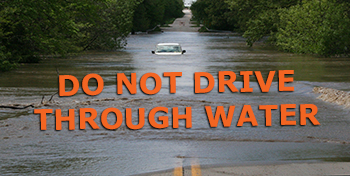Flood Preparedness: How to Protect Your Home and Family
As floods can occur unexpectedly and cause significant damage, it is crucial to be prepared in advance. By taking proactive steps to protect your home and family, you can minimize the impact of a flood and ensure everyone’s safety. Here are some essential tips for flood preparedness:
Create an Emergency Plan
Develop a detailed emergency plan that includes evacuation routes, meeting points, and contact information for emergency services. Make sure all family members are aware of the plan and practice it regularly.
Secure Important Documents
Store important documents such as insurance policies, identification papers, and medical records in a waterproof container or safe deposit box. Keep digital copies of these documents stored securely online.
Prepare an Emergency Kit
Assemble an emergency kit that includes non-perishable food, water, first aid supplies, flashlights, batteries, and essential medications. Make sure to have enough supplies to last at least three days.
Safeguard Your Home
Elevate electrical appliances and utilities above potential flood levels. Install check valves in plumbing to prevent backups. Consider waterproofing basements and installing sump pumps for added protection.
Stay Informed
Monitor weather alerts and warnings issued by local authorities. Have a battery-powered radio or access to emergency alerts on your phone to stay updated on flood conditions in your area.
Evacuate When Necessary
If authorities recommend evacuation due to imminent flooding, follow their instructions promptly. Do not attempt to drive through flooded areas or wade through moving water as it can be dangerous.
By following these flood preparedness tips and staying vigilant, you can better protect your home and loved ones during a flood emergency. Remember that preparedness is key to mitigating risks and ensuring everyone’s safety.
Top 6 FAQs on Flood Preparedness: Emergency Kits, Home Safety, and More
- What should I include in my emergency kit for flood preparedness?
- How can I safeguard my home against floods?
- What should be included in my family’s emergency plan for floods?
- How can I stay informed about flood warnings and alerts?
- What are the signs that indicate a potential flooding situation?
- What actions should I take if flooding is imminent?
What should I include in my emergency kit for flood preparedness?
When preparing an emergency kit for flood readiness, it is essential to include items that can sustain you and your family for at least three days. Your emergency kit should consist of non-perishable food, an ample supply of water, first aid supplies, flashlights with extra batteries, a multi-tool or Swiss army knife, personal hygiene items, important medications, copies of important documents stored in a waterproof container, and a battery-powered or hand-crank radio to stay informed about the situation. Additionally, consider including blankets or sleeping bags, extra clothing, cash in small denominations, and any special items needed for infants or pets. Being well-prepared with a comprehensive emergency kit can make a significant difference in ensuring your safety and well-being during a flood event.
How can I safeguard my home against floods?
To safeguard your home against floods, there are several proactive measures you can take. Start by ensuring proper drainage around your property to direct water away from the foundation. Consider installing a sump pump and a backflow valve to prevent water from entering your basement. Elevate electrical systems, appliances, and valuable items to higher levels to minimize damage. Waterproofing basements and sealing cracks in walls can also help prevent water intrusion. Additionally, keeping gutters and downspouts clear of debris and investing in flood insurance can provide added protection for your home in the event of a flood. By implementing these preventive measures, you can better prepare your home to withstand potential flooding risks.
What should be included in my family’s emergency plan for floods?
When creating a family emergency plan for floods, it is essential to include key elements that ensure everyone’s safety and preparedness. Your plan should outline evacuation routes, designated meeting points, and contact information for local emergency services. Make sure all family members are familiar with the plan and practice it regularly to ensure a quick and efficient response in case of a flood. Additionally, consider including important documents like insurance policies, identification papers, and medical records in a waterproof container or safe deposit box as part of your emergency preparedness strategy. By having a well-thought-out emergency plan tailored to flood situations, you can better protect your family and navigate potential challenges with confidence.
How can I stay informed about flood warnings and alerts?
To stay informed about flood warnings and alerts, it is essential to utilize multiple sources of information. Monitoring local news channels, radio broadcasts, and weather websites can provide real-time updates on flood warnings in your area. Additionally, signing up for emergency notification systems or alerts from your local government or weather service can ensure that you receive timely information directly to your phone or email. It is also advisable to follow official social media accounts of relevant authorities for instant updates during flood events. By staying informed through various channels, you can take proactive measures to protect yourself and your family in the event of a flood.
What are the signs that indicate a potential flooding situation?
Recognizing the signs of a potential flooding situation is crucial for effective flood preparedness. Some common indicators include heavy rainfall over an extended period, rapid snowmelt, rising water levels in rivers or streams, and clogged drainage systems causing water backup. Additionally, mudslides, saturated ground, and weather forecasts predicting severe storms can also signal an increased risk of flooding. Being aware of these signs and staying informed through weather alerts can help individuals take timely precautions to protect themselves and their property from potential flood damage.
What actions should I take if flooding is imminent?
In the event that flooding is imminent, it is crucial to take immediate actions to ensure your safety and minimize potential damage. First and foremost, follow any evacuation orders issued by local authorities without delay. Gather essential items such as important documents, emergency supplies, and medications. Move to higher ground if possible and avoid walking or driving through flooded areas. Disconnect electrical appliances and utilities to prevent hazards. Stay informed through weather updates and emergency alerts. By acting swiftly and decisively when flooding is imminent, you can protect yourself, your loved ones, and your property from harm.




